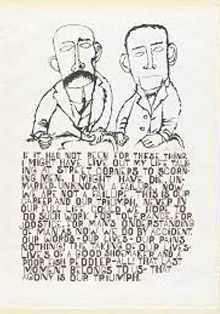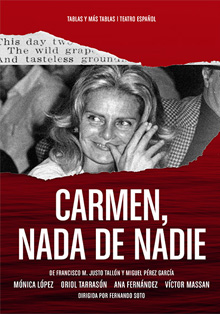On Nonconformity is the title of the exhibition by the Lithuanian Jewish painter Ben Shahn (Kaunas, 1898-New York, 1969) which until 26 February will be on display at the Museo Nacional Centro de Arte Reina Sofía (Calle Santa Isabel, 52, Edificio Sabatini, Floor 1).
In 1957, this American artist from a Lithuanian Jewish family wrote On Nonconformity, one of the six lectures he gave at Harvard University. In this text he argued that non-conformity is an indispensable condition not only for artistic production, but also for any significant social change. This thought runs through the work of Shahn, who over the course of four decades dealt with issues such as unemployment, discrimination, totalitarianism, militarism and the threat to freedom of expression.
This retrospective exhibition reviews all these successive “non-conformities” of the artist through the thematic presentation of works in different media and abundant archival documentation. This collection of materials shows the artist’s progressive and humanist commitment and reveals the often underappreciated complexity of his aesthetic vision. At a time marked by the influence of Abstract Expressionism, Shahn defended the figurative, arguing against the formalist doctrine that “form is the very form of content”. However, his use of figuration gradually changed: while historiography defines him as a representative of American social realism of the 1930s, Shahn himself would later refer to his work as a “personal realism” applied to the observation of people and their everyday environment.
His painting in the early 1930s dealt with several famous court cases whose injustice had been the subject of strong public controversy, most notably the series of 1931-1932 on the execution of the Italian anarchist immigrants Nicola Sacco and Bartolomeo Vanzetti. Around the same time he began to work as a photographer, first portraying the New York of the Great Depression and, from 1935, documenting living conditions in rural areas of the United States for the Resettlement Administration-Farm Security Administration (RA-FSA). His photographs became part of an enormous repository that served to shape the imagery of his painting. At this time he also received other commissions from President Franklin Delano Roosevelt’s New Deal government, including several murals, which are featured in the exhibition.
Then, in the early 1940s, Shahn produced graphic work condemning Nazi atrocities for the US Office of War Information and bearing witness to the devastation of World War II. Of Nonconformity also includes his paintings of a more cryptic content, but of a melancholy that is also a mourning for the disaster of war.
Later, in the 1950s, many of his works – depictions of masks, circus motifs and trial scenes – served as a protest against anti-Communist hysteria and the policies of McCarthyism. Among the various themes Shahn developed during this decade and the 1960s were the absolute certainties of science – to which he countered a certain scepticism – and his concerns about the dire consequences of the nuclear arms race. Until his death in 1969, he also supported the non-violent disobedience strategies of the civil rights movement and the anti-Vietnam war. The exhibition closes with late works in which Shahn turned to themes of Judaism, spirituality, and sacred history, all of which are informed by Ben Shahn’s deep social conscience. Tickets to visit the exhibition can be purchased here.







